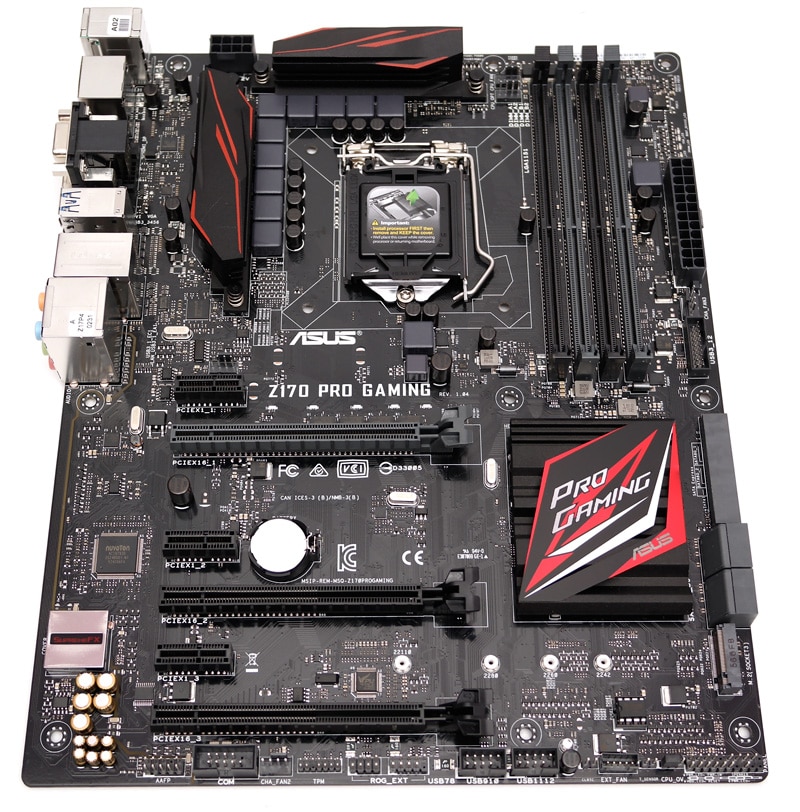ASUS Z170 Pro Gaming (LGA 1151) Motherboard Review
A Closer Look & Layout Analysis
Looking at the motherboard in general and it’s relatively plain. Small MOSFET heat sinks add a small splash of colour and style to the upper half of the board. There is a fair amount of space around the CPU socket, perfect for fitting those fiddly cooling solutions.

Taking a look at the CPU socket itself. It resembles the sockets of previous years thanks to a great pin design. This motherboard can accept cooling solutions from the 1150 range of motherboards.

The chipset heatsink is very stylish. ASUS really want to drive home to ‘Pro Gaming’ brand name.

Looking at the I/O options. The layout is conventional and features the following: 1x PS/2 port, 2x USB 2.0, 1x DisplayPort, 1x HDMI port, 1x VGA, 1x DVI, 4x USB 3.0, 1x Gigabit LAN, 2x USB 3.1 (1x Type A, 1x Type C), 1x S/PDIF out and 5 HD audio jacks.

Moving down the side of the board, we can see the yellow opaque line running the length of the SupremeFX amplifier. This signifies the different right and left sound layers.

The SupremeFX Amp is covered in a similar casing to that of the previous ASUS RoG motherboards.
ASUS is trying to cram as much as possible onto this motherboard. 3x PCIe x1 lanes and 2x PCIe x16 lanes dominate the add-on card section.

Placed just below the chipset heatsink is the M.2 port. With some smart designing, the port can accommodate 110mm SSD’s due to the placement of the PCIe lanes.

At the bottom of the board, is the usual array of headers. Thanks to this board having RoG connections, it has the ROG_EXT header, which allows the board to connect with the RoG front panel display for overclocking and monitoring.

Moving along the bottom, we see the single BIOS chip, USB 2.0 headers and front panel audio headers.

Along the other side of the motherboard, we see the only M.2 port, 6x SATA 6Gb/s and 1x SATA Express ports.

Opposite the I/O ports, we find the 4 DDR4 DIMMS, 24 pin power connection, USB 3.0 header and channel fan header.










if I wanted to use a different sli bridge than the one which it comes with, which size should I get? is it M (slot 1 to 4)?